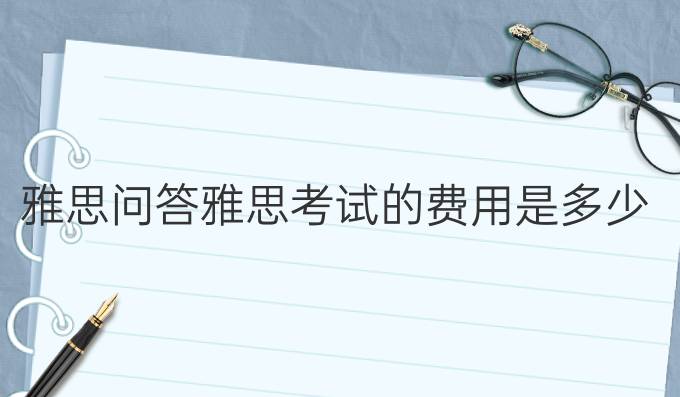本文为大家带来雅思阅读机经真题Amateur Naturalists和Nobel详细解析,大家可以拿这篇文章来练练手,体验一下机经真题的难度,大家在做的时候最好控制自己的时间。
Alfred Nobel
The man behind the Nobel Prize
A Since 1901, the Nobel Prize has been honoring men and women from all comers of the globe for outstanding achievements in physics, chemistry, medicine, literature, and for work in peace. The foundations for the prize were laid in 1895 when Alfred Nobel wrote his lost will, leaving much of his wealth to the establishment of the Nobel Prize.

B Alfred Nobel was born in Stockholm on October 21. 1833. His father Immanuel Nobel was an engineer and inventor who built bridges and buildings in Stockholm. In connection with his construction work Immanuel Nobel also experimented with different techniques for blasting rocks. Successful in his industrial and business ventures, Immanuel Nobel was able, in 1842, to bring his family to St. Petersburg. There, his sons were given a first class education by private teachers. The training included natural sciences, languages and literature. By the age of 17 Alfred Nobel was fluent in Swedish, Russian, French, English and German. His primary interests were in English literature and poetry as well as in chemistry and physics. Alfred's father, who wanted his sons to join his enterprise as engineers, disliked Alfred's interest in poetry and found his son rather introverted.
C In order to widen Alfred's horizons his father sent him abroad for further training in chemical engineering. During a two year period Alfred Nobel visited Sweden, Germany. France and the United States. In Paris, the city he came to like best, he worked in the private laboratory of Professor T. J. Pelouze, a famous chemist. There he met the young Italian chemist Ascanio Sobrero who, three years earlier, had invented nitroglycerine, a highly explosive liquid. But it was considered too dangerous to be of any practical use. Although its explosive power greatly exceeded that of gunpowder, the liquid would explode in a very unpredictable manner if subjected to heat and pressure. Alfred Nobel became very interested in nitroglycerine and how it could be put to practical use in construction work. He also realized that the safety problems had to be solved and a method had to be developed for the controlled detonation of nitroglycerine.
D After his return to Sweden in 1863, Alfred Nobel concentrated on developing nitroglycerine as an explosive. Several explosions, including one (1864) in which his brother Kmil and several other persons were killed, convinced the authorities that nitroglycerine production was exceedingly dangerous. They forbade further experimentation with nitroglycerine within the Stockholm city limits and Alfred Nobel had to move his experimentation to a barge anchored on Lake Malaren. Alfred was not discouraged and in 1864 he was able to start mass production of nitroglycerine. To make the handling of nitroglycerine safer Alfred Nobel experimented with different additives. He soon found that mixing nitroglycerine with kieselguhr would turn the liquid into a paste which could be shaped into rods of a size and form suitable for insertion into drilling holes. In 1867 he patented this material under die name of dynamite. To be able to detonate the dynamite rods he also invented a detonator (blasting cap) which could be ignited by lighting a fuse. These inventions were made at the same time as the pneumatic drill came into general use. Together these inventions drastically reduced the cost of blasting rock, drilling tunnels, building canals and many other forms of construction work.
E The market for dynamite and detonating caps grew very rapidly and Alfred Nobel also proved himself to be a very skillful entrepreneur and businessman.Over the years he founded factories and laboratories in some 90 different places in more than 20 countries. Although he lived in Paris much of his life he was constantly traveling. When he was not traveling or engaging in business activities Nobel himself worked intensively in his various laboratories, first in Stockholm and later in other places. He focused on the development of explosives technology as well as other chemical inventions, including such materials as synthetic rubber and leather, artificial silk, etc. By the time of his death in 18% he had 355 patents.
F Intensive work and travel did not leave much time for a private life. At the age of 43 he was feeling like an old man. At this time he advertised in a newspaper"Wealthy, highly-educated elder gentleman seeks lady of mature age, versed in languages, as secretary and supervisor of household." The most qualified applicant turned out to be an Austrian woman. Countess Bertha Kinsky. After working a very short time for Nobel she decided to return to Austria to marry Count Arthur von Suttner. In spite of this Alfred Nobel and Bertha von Suttner remained friends and kept writing letters to each other for decades. Over the years Bertha von Suttner became increasingly critical of the arms race. She wrote a famous book, Lay Down Your Arms and became a prominent figure in the peace movement. No doubt this influenced Alfred Nobel when he wrote his final will which was to include a Prize for persons or organizations who promote peace. Several years after the death of Alfred Nobel, the Norwegian Storting (Parliament) decided to award the 1905 Nobel Peace Prize to Bertha von Suttner.
G Alfred Nobel died in San Remo, Italy, on December 10, 1896. When his will was opened it came as a surprise that his fortune was to be used for Prizes in Physics, Chemistry. Physiology or Medicine, Literature and Peace. The executors of his will were two young engineers, Ragnar Sohlman and Rudolf Lilljequist. They set about forming the Nobel Foundation as an organization to take care of the financial assets left by Nobel for this purpose and to coordinate the work of the Prize-Awarding Institutions. This was not without its difficulties since the will was contested by relatives and questioned by authorities in various countries.
H Alfred Nobel's greatness lay in his ability to combine the penetrating mind of the scientist and inventor with the forward-looking dynamism of the industrialist. Nobel was very interested in social and peace-related issues and held what were considered radical views in his era. He had a great interest in literature and wrote his own poetry and dramatic works. The Nobel Prizes became an extension d a fulfillment of his lifetime interests.
Questions 1-6
Do the following statements agree with the information given in Reading Passage 1?
In boxes 1-6 on your answer sheet, write
TRUE if the statement is true
FALSE if the statement is false
NOT GIVEN if the information is not given in the passage
1 The first Nobel Prize was awarded in 1895.
2 Nobel's father wanted his son to have better education than what he had had.
3 Nobel was an unsuccessful businessman.
4 Bertha von Suttner was selected by Nobel himself for the first peace prize.
5 The Nobel Foundation was established after the death of Nobel
6 Nobel's social involvement was uncommon in the 1800’s.
Questions 7-13
Complete the notes below using NO MORE THAN TWO WORDS from the passage.
Write your answers in boxes 7-13 on your answer sheet.
Table 1
Education:
Having accumulated a great fortune in his business, Nobel's father determined to give his son the best education and sent him abroad to be trained in 7 During Nobel's study in Paris, he worked in a private laboratory, where he came in contact with a young Scientist (engineer) 8 and his invention nitroglycerine, a more powerful explosive than 9
Table 2
Benefits in construction works:
Nobel became really interested in this new explosive and experimented on it. But nitroglycerine was too dangerous and was banned for experiments within the city of 10 So Nobel had to move his experiments to a lake. To make nitroglycerine easily usable, Nobel invented dynamite along with 11 while in the meantime 12 became popular, all of which dramatically lowered the 13 of construction works.
文章题目:Alfred Nobel
The man behind the Nobel Prize
篇章结构
体裁
人物传记
题目
阿尔弗雷德—诺贝尔奖背后的人
结构
(一句话概括每段大意)
A段:诺奖的介绍及诺贝尔对诺奖的贡献
B段:诺贝尔的家庭介绍和童年经历
C段:诺贝尔对炸药消化甘油产生兴趣
D段:诺贝尔安全炸药的发明及其应用
E段:诺贝尔的生活状态和他的发明成果
F段:诺贝尔设立和平奖的缘由
G段:诺贝尔遗产的分配和诺奖的成立
H段:对诺贝尔生平成就的评价
以上内容就是朗阁为大家整理的雅思阅读机经真题Amateur Naturalists和Nobel相关信息,想了解更多留学考试内容,请戳朗阁首页了解更多资讯。
.png)






